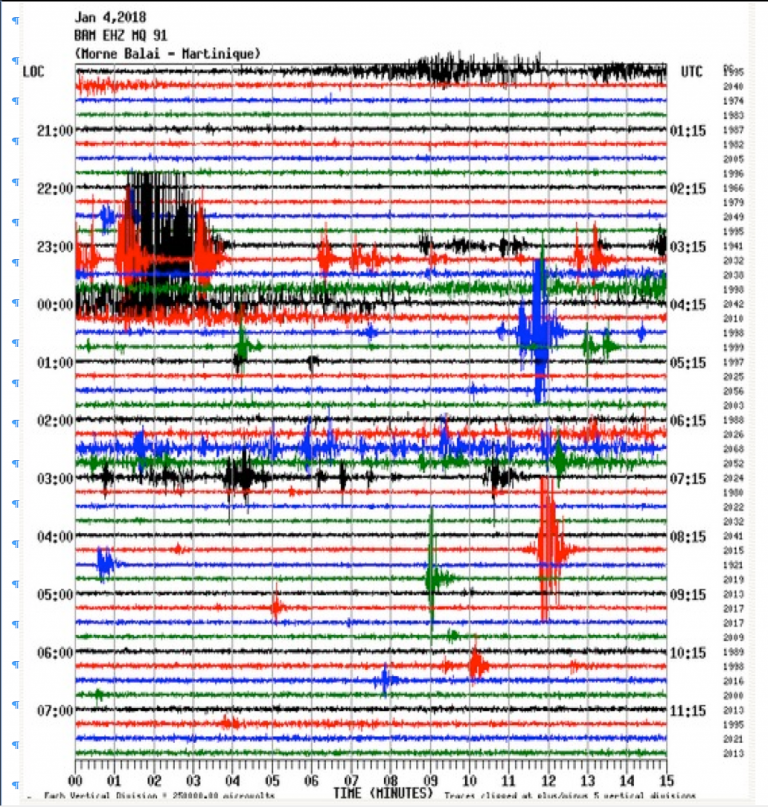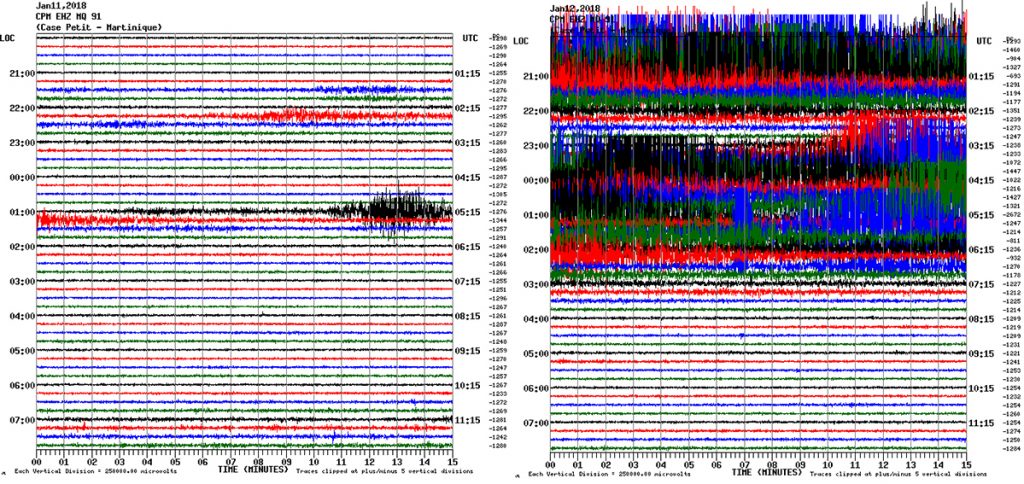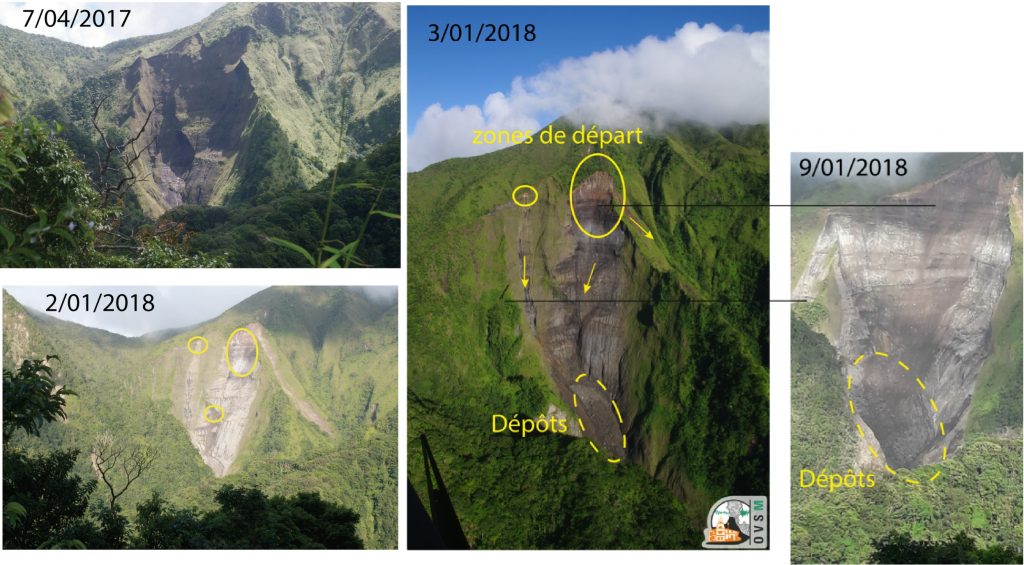Mudflows, Prêcheur river, Montagne Pelée, Martinique
In Martinique, a major landslide sequence began on January 2nd 2018 at the Falaise Samperre, on the western flank of Montagne Pelée, north-west of the summit (Figure 1). It is still ongoing. The volumes involved in these landslides are greater than during the last major episode in April 2010.

Précheur River
Publication date: 12/01/2018
Observatories, Press, Research
Related observatories : Volcanological and Seismological Observatory of Martinique (OVSM-IPGP)
Related themes : Natural Hazards













